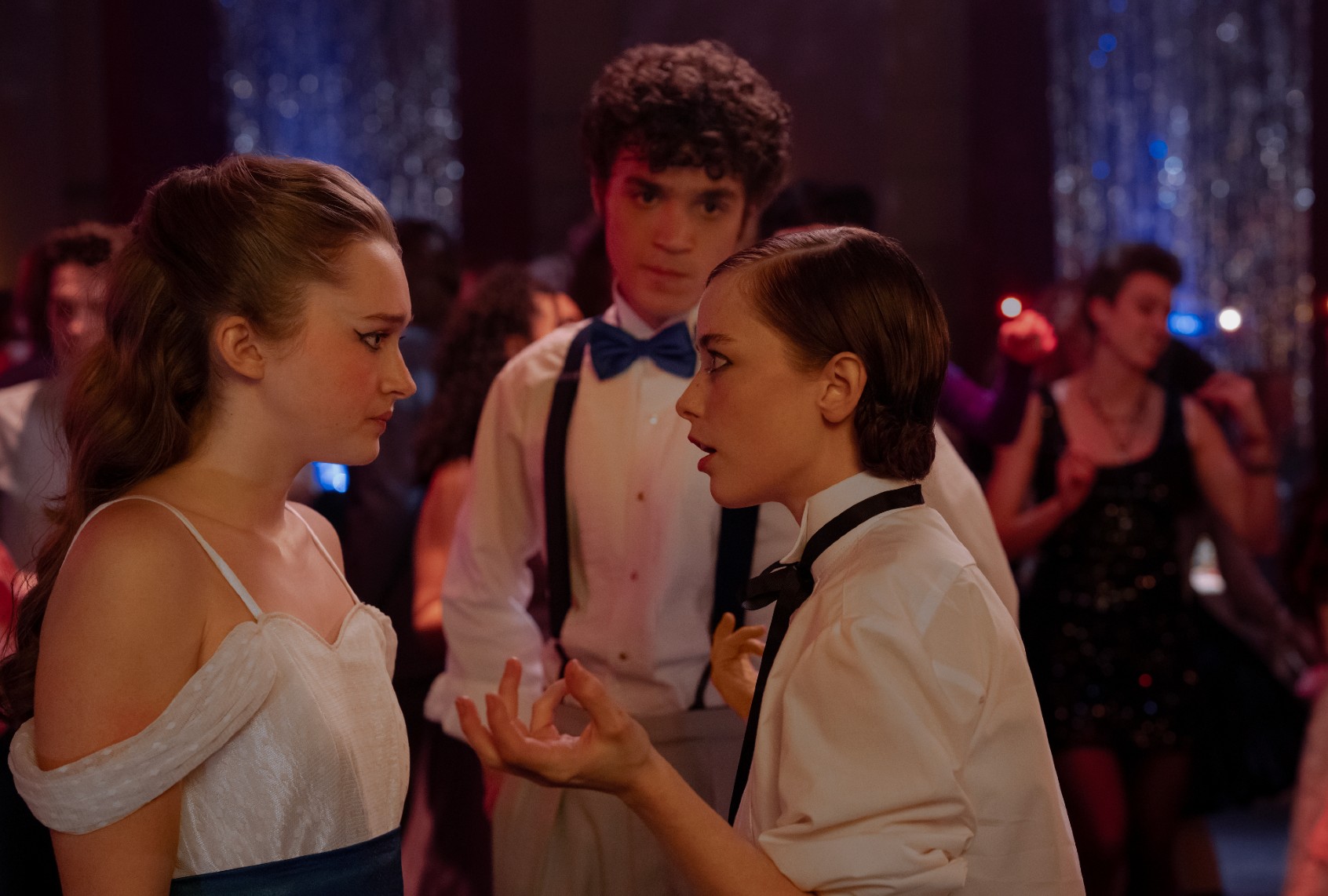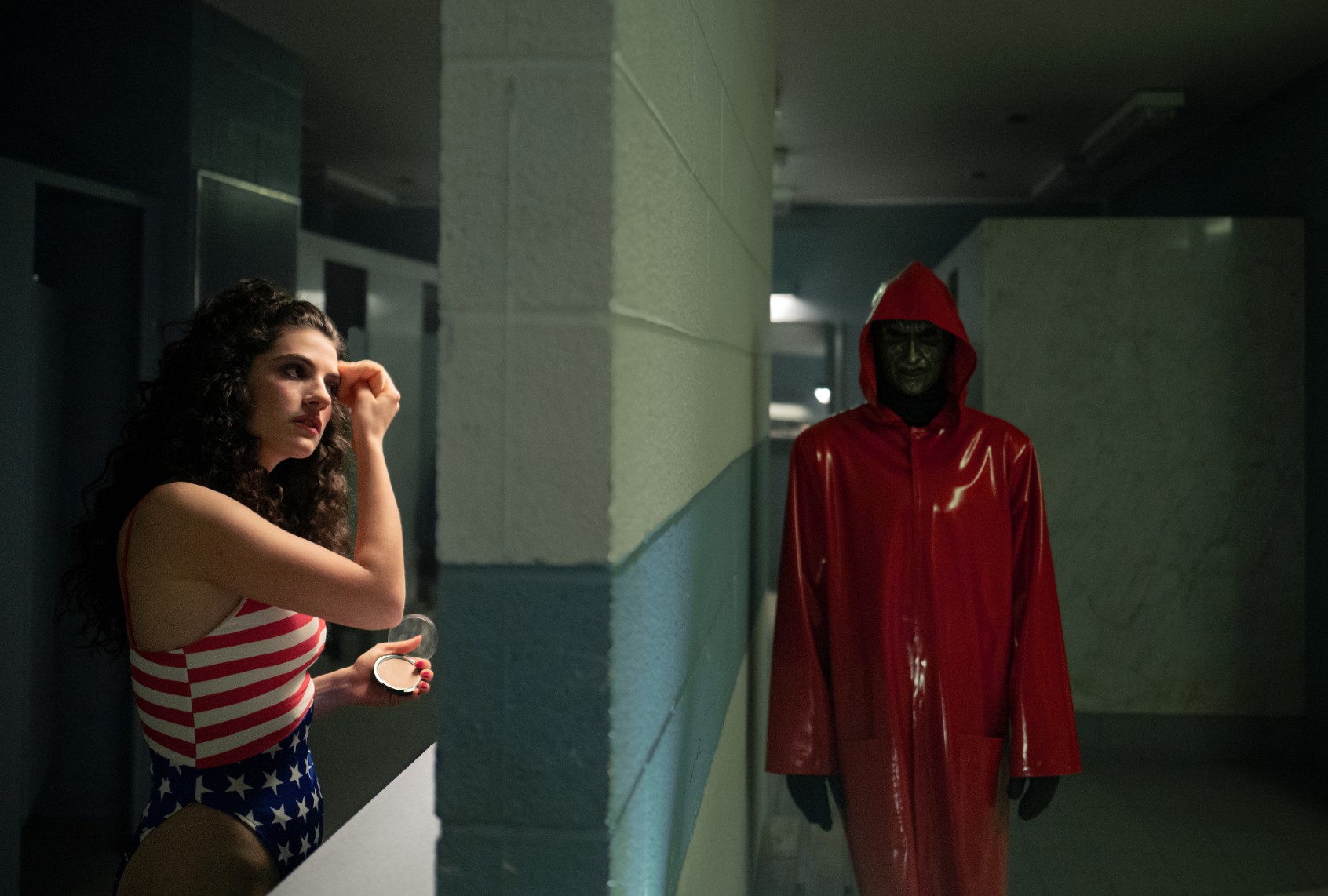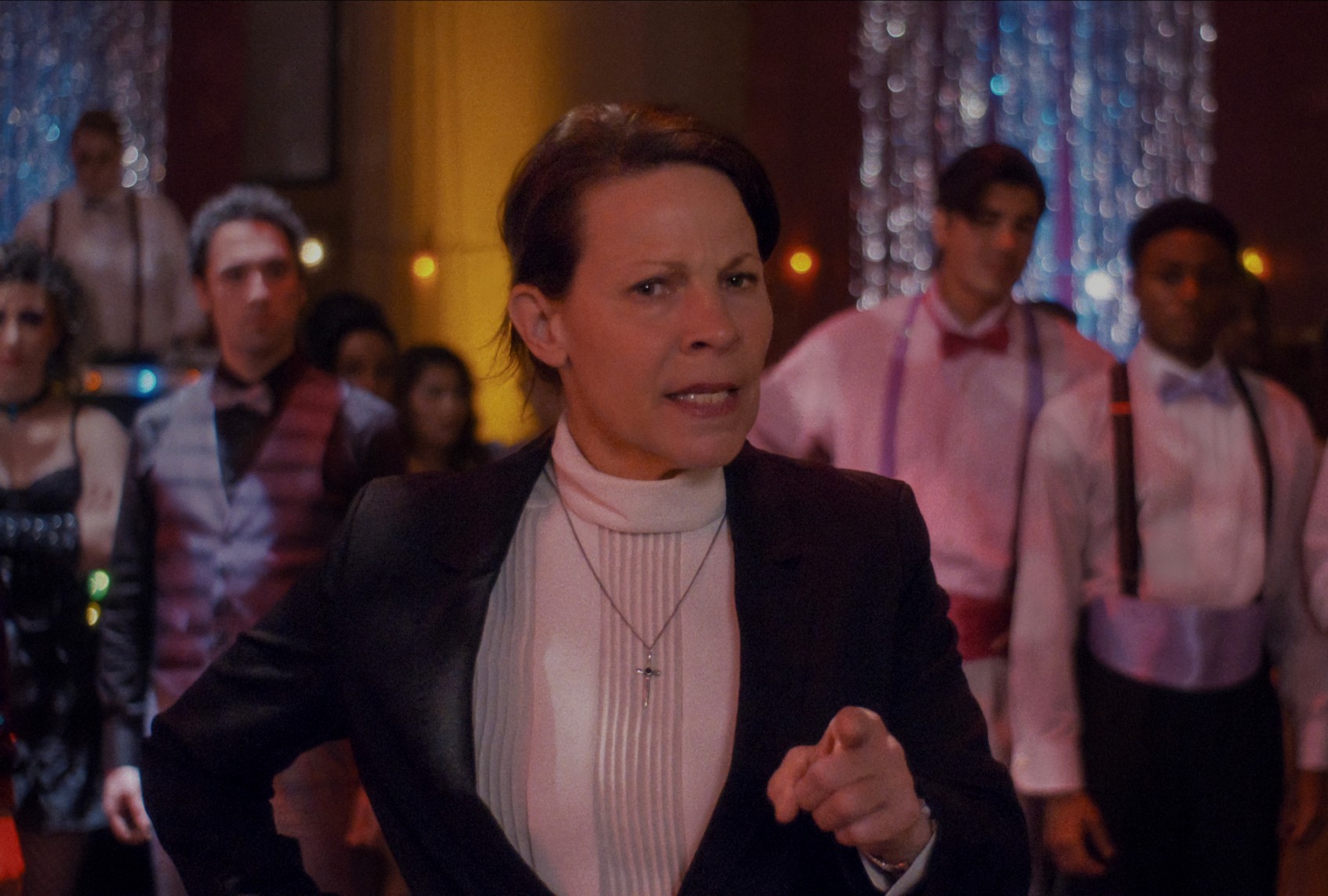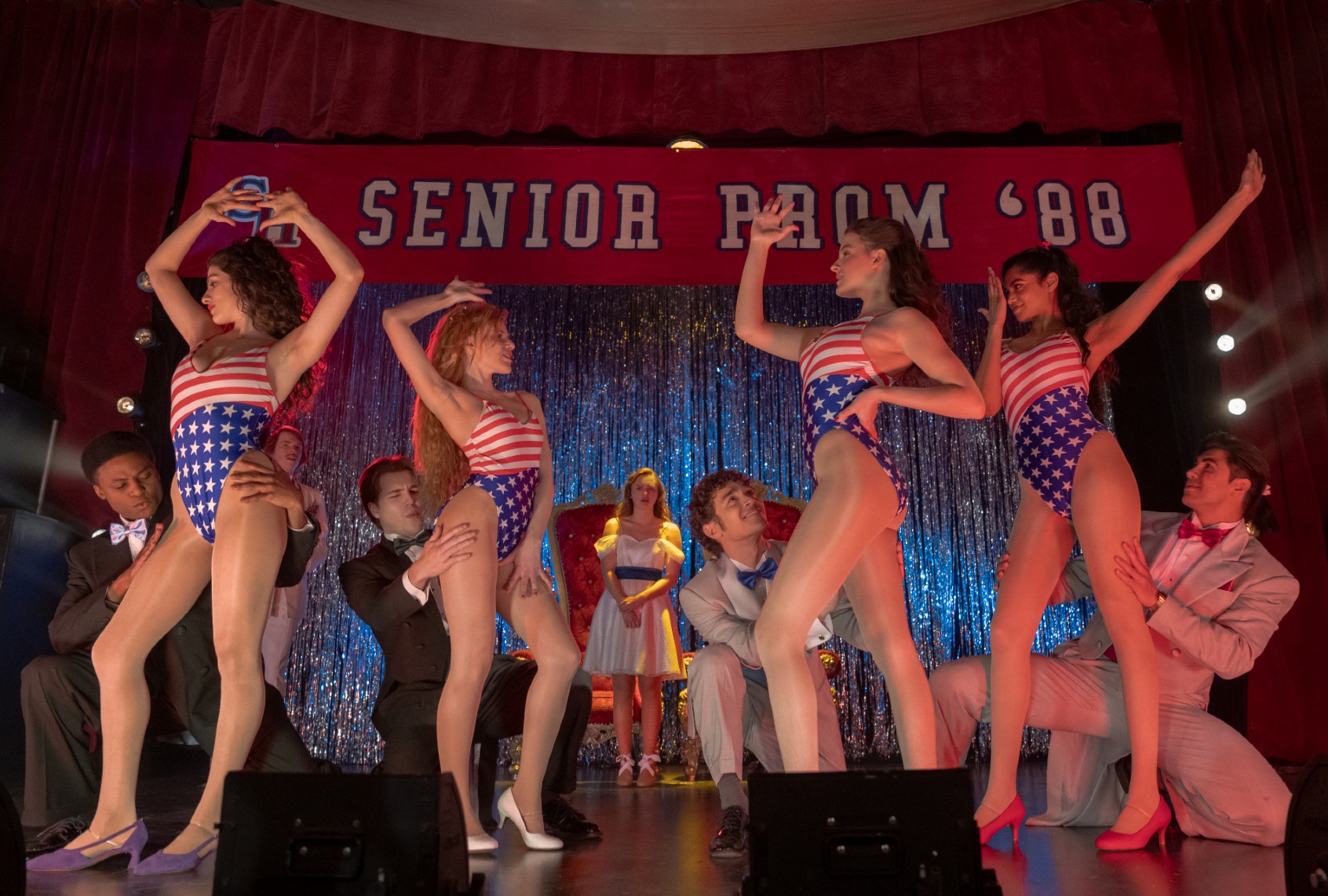Prom and horror cinema share a rich enough relationship to sustain their own subgenre: “Carrie,” “Tragedy Girls,” “The Prowler,” Student Bodies,” “Texas Chainsaw Massacre: The Next Generation,” “Dance of the Dead” and, of course, the film wearing the crown, “Prom Night.” A customary end-of-year school dance makes a nice, chintzy locus for assembling a gang of characters in a single location, where they can each be picked off at the convenience of the night’s M.C. (master of carnage, in this case). As such, and given the source material, Netflix’s decision to follow up “Fear Street: 1666,” the concluding chapter of its “Fear Street” slasher series, with a party is sensible.
But how the streamer and newcomer Matt Palmer approach “Fear Street: Prom Queen” makes no sense. “Prom Queen,” unlike the first three “Fear Street” movies – each distinguished annually, from “1994” to “1978” to “1666,” and each directed by Leigh Janiak – directly adapts the same-named book from author R.L. Stine’s bibliography, “The Prom Queen,” logline more or less intact: Shadyside High is revving up for the prom, and everyone’s excited, including a maniac decked out in a grim visaged mask and a crimson latex coat, stalking prom queen candidates in the school’s hallways with an ax. One by one, each would-be monarch loses her head, until the culprit is caught and exposed, “Scooby-Doo” style.
The order of operations in R.L. Stine’s calculus results in a largely aseptic affair on the page, but Netflix takes the responsibility of choreographing kids’ murders much more seriously. If no single death scene in “Fear Street: Prom Queen” matches the level of the superlative bread slicer kill from “Fear Street: 1994,” the movie makes creative enough use of circular saws and paper cutters to suffice and sustain audience interest. Thin character development hobbles the film’s pacing during moments where giving any of them a shred of an identity would’ve helped pass the time between kills; it’s a letdown that each cast member — apart from the fantastic Lili Taylor as VP Dolores Brekenridge — reads so anonymously, considering how efficiently Janiak’s films give personalities even to their minor supporting characters.
 (L-R) India Fowler as Lori Granger, David Iacono as Tyler Torres and Suzanna Son as Megan Rogers in "Fear Street: Prom Queen." (Alan Markfield/Netflix)
(L-R) India Fowler as Lori Granger, David Iacono as Tyler Torres and Suzanna Son as Megan Rogers in "Fear Street: Prom Queen." (Alan Markfield/Netflix)
The movie makes creative enough use of circular saws and paper cutters to suffice and sustain audience interest.
But it’s the thought process driving Palmer’s themes and plot here that’s frustrating. In contrast to Janiak’s trilogy films, “Fear Street: Prom Queen” is a shockingly retrograde piece of work, with no significant thought given to ideas about, among other things, class and sexual orientation, key pillars of “Fear Street: 1994” and “Fear Street: 1666.” Frankly, the film has so little on its mind in general that if a butcher’s cleaver slammed through its skull, it would strike cotton candy instead of gray matter.
 Ella Rubin as Melissa in "Fear Street: Prom Queen" (Alan Markfield/Netflix)The story hinges on a classic contest between good and evil, where “good” is represented by Lori Granger (India Fowler), the prom queen underdog, and “evil” by Tiffany Falconer (Fina Strazza), the mean-girl shoe-in to win. Lori works at the local diner to pay for her own prom dress, while her mother (Joanne Boland), a former prom queen candidate herself, hustles grueling hours to make ends meet as the sole provider of their house; Tiffany, of course, has money, and “Fear Street: Prom Queen” contentedly rests on that sole motif for supporting subtextual worldbuilding. We know, we know: elites bad, working class good; cool kids bad, unpopular kids good. The fraying edges around the blueprint Palmer borrows from here wouldn’t matter half as much if the movie had anything insightful to say about what makes Tiffany’s beef with Lori remarkable. Instead, it’s simply assumed by the screenplay, which Palmer co-wrote with Donald McLeary, that we’ll root for Lori on principle.
Ella Rubin as Melissa in "Fear Street: Prom Queen" (Alan Markfield/Netflix)The story hinges on a classic contest between good and evil, where “good” is represented by Lori Granger (India Fowler), the prom queen underdog, and “evil” by Tiffany Falconer (Fina Strazza), the mean-girl shoe-in to win. Lori works at the local diner to pay for her own prom dress, while her mother (Joanne Boland), a former prom queen candidate herself, hustles grueling hours to make ends meet as the sole provider of their house; Tiffany, of course, has money, and “Fear Street: Prom Queen” contentedly rests on that sole motif for supporting subtextual worldbuilding. We know, we know: elites bad, working class good; cool kids bad, unpopular kids good. The fraying edges around the blueprint Palmer borrows from here wouldn’t matter half as much if the movie had anything insightful to say about what makes Tiffany’s beef with Lori remarkable. Instead, it’s simply assumed by the screenplay, which Palmer co-wrote with Donald McLeary, that we’ll root for Lori on principle.
The cast embodies such clearly defined horror character tropes that the film’s context reinforces systemic strictures, sending it a dozen steps backward from the “Fear Street” trilogy.
And of course, we’re in Lori’s corner; she’s the final girl. There’s not much else there for the audience to cling to, though. We support Lori because that’s the basic expectation, and not because “Fear Street: Prom Queen” gives us a specific reason to, by way of even a shred of insight into her character. The movie promises nothing, and keeps the promise. At points peppered throughout its 90-minute running time, Palmer seems to suggest a substantive history between Lori and Tiffany, or that Megan (Suzanna Son), Lori’s best friend, harbors possible unrequited love for her, but these implications amount to no more than mere hints. These are dreadfully static characters, which would be fine if they were interesting, but the furthest the film gets with Tiffany is that she’s an elitist bully, and the furthest it gets Megan is that she likes horror movies, apparently because that’s the only way Palmer knows for separating outsiders from the “it” crowd.
 Lili Taylor as VP Dolores Brekenridge in "Fear Street: Prom Queen" (Netflix)
Lili Taylor as VP Dolores Brekenridge in "Fear Street: Prom Queen" (Netflix)
Want a daily wrap-up of all the news and commentary Salon has to offer? Subscribe to our morning newsletter, Crash Course.
Funneled into the framework of a prom slasher, the bungling of "Fear Street: Prom Queen" feels downright pernicious. It’s one sort of problem to litter the narrative with flat characters and airless performances; the cast must be suffocating from how little life they breathe into their roles. But each of them embodies such clearly defined horror character tropes that the film’s context reinforces systemic strictures, sending it a dozen steps backward from the “Fear Street” trilogy. Janiak pushed against, for example, heteronormativity, and patriarchal entitlement, the latter being the trio’s throughline. “Fear Street: Prom Queen” only rebukes upper-class greed in superficial ways that are necessary to the plot, then muddles its message by personalizing the killer’s motive beyond the ceaseless hunger for more that wealth instills in those who have it.
Perhaps the problem is the timeline; “Fear Street: Prom Queen” takes place before the events of the first three “Fear Street” movies, where the Shadyside curse, responsible for turning everyday folks into psychotic killers, is ultimately broken. But “Fear Street: Prom Queen” treats the curse as an Easter egg and rests on a hazy formulation of human cruelty as its villain instead. Is this a story about the haves taking from the have-nots? Is it about the elites’ repressed insecurities over their merits? Palmer appears confident in the presumption that viewers will simply go along with it because that’s the pop culture compact of late, and while despising the rich is all fun and games, the exercise strikes as regressive when the routines are this rote.


